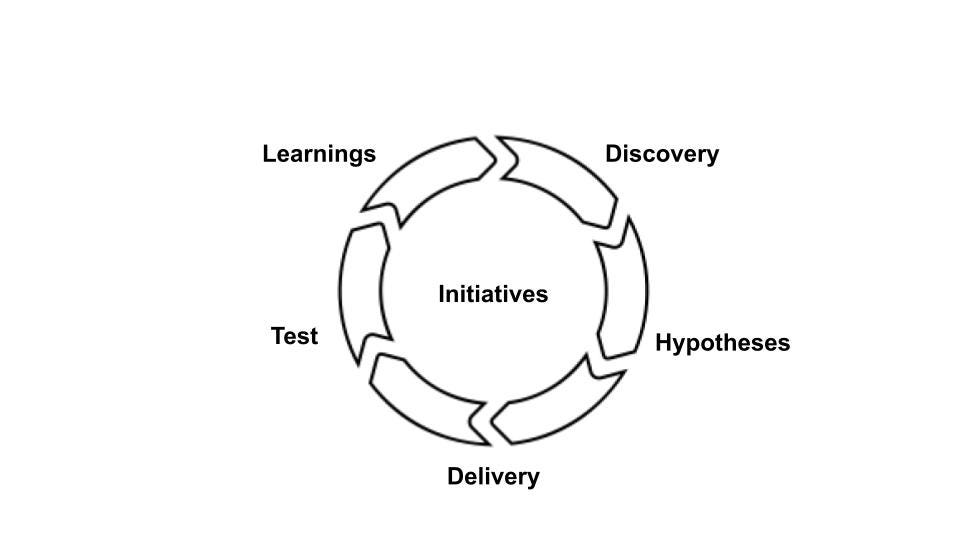It’s Not About The Great Idea
Process over Projects
I’ve written before about how we should favor principles over process and I stick by that statement but today I want to give process a ‘shot in the arm’. What I’ve witnessed over and over again is executives in tech companies looking for the next great idea. They are sure that if they or their head of product can just come up with one great idea, the company will turn around, customers will come flocking back, and growth will ensue.
The problem with this approach is that great ideas don’t magically turn into great products. Let’s take Steve Jobs, who is touted as a product visionary by many. In fact, upon his passing the former U.S. President Barack Obama made the statement, “The world has lost a visionary.” The truth is that even Steve Jobs, who arguably loved the title and adoration, knew that great ideas aren’t the hard part. The hard work isn’t the idea because the idea never works as planned. The hard work is the process of forming a hypothesis based on user research, build a first version of the feature that attempts to solve the customer’s problem, conduct a test to see if it helped, take what you learned from that test and put it back into the cycle, rinse and repeat.
A CPO friend of mine was commenting about a big launch that a company had done recently with multiple millions of advertising behind it and he stated, “I’ve never known a product that didn’t require iteration.” I would say that there is no chance that a product launch will be successful straight out of the gate but we actually have data on that. A 2017 Harvard Business Review article states, "At Google and Bing, only 10% to 20% of experiments yield positive results. At Microsoft, a third are effective, a third neutral, and a third negative." This is exactly what I’ve experienced, you have about a 15% chance of a first product or feature launch yielding positive results as measured by some customer-related metric like sales, engagement, retention, conversion, etc. According to a post on MIT’s professional education blog, out of the 30,000 products that are launched yearly, 95% fail. Why would you throw a huge chunk of your marketing budget behind an unproven product idea? It might be a great idea and eventually turn into a great product but this is not likely on the first release.
So, if it’s not about the great idea but really about the process, why do people have such a hard time with this concept? I think it’s because we’re used to dealing with products and not processes. We can click on a button and see something happen in a mobile app. What we don’t see is the dozen different versions that were tested to find the ideal color of the button, the best placement of the button, the most engaging results, etc. So when it’s our turn to build a product, we start with the finished idea of a feature. We focus on trying to come up with that single great idea, instead of thinking about what problem we are trying to solve and the iterative process that gets us there.
This idea of rapid iteration is also relatively new with digital products. If you are making a physical product, you really want to get it right the first time. Of course, modern manufacturing has all types of ways to design and prototype faster and cheaper than a full production run but the cost is still much more significant than it is with a digital product. This was especially true 70+ years ago when software development was still a very young discipline. In those early years, software development took much of its cues from manufacturing as documented in A Brief History of Software Development and Manufacturing.
The early years of software development was a period that lacked formal control methods, mirroring pre-industrial revolution craftsmanship. However, as software complexity increased and became integral to business operations, a shift towards disciplined, managed processes emerged by the mid-1960s, influenced by Frederick Winslow Taylor's Scientific Management principles. This shift introduced factory-like concepts in software development, emphasizing standardization, specialization, and management control to improve productivity and quality. By the late 1960s, concepts like the "software factory," systematic code reusability, and modularization gained traction, culminating in the adoption of structured methodologies such as the waterfall model, which stressed detailed planning, strict process adherence, and role specialization to enhance efficiency in software projects. Even the roots of Agile software development can be traced to both Lean and Agile manufacturing paradigms. Thus, our approach for digital product development has long been more akin to coming up with a great idea and trying to develop it with as high quality as possible by following manufacturing best practices of the day.
With the chance of a successful first launch abysmally low, in our world of digital products it only makes sense to plan on lots of iterations. Repeating the cycle of discovery -> hypothesis -> deliver -> test -> learn over-and-over until we have solved our customers’ problems is really the only logical way to build digital products. Searching for the one great idea that is going to revolutionize the industry or send your company into hyper growth mode is far too risky and fraught with dangers.
So, the next time your boss either asks about the next great feature or suggests they have the next great idea, take the time to explain to them about the risks involved in that approach. In our digital product worlds, we have the luxury of iterating very quickly and cheaply. To not take advantage of that would be silly. Trust the process.




Me: trying to explain to my boss about the risks involved in building another great feature and grand idea.
My boss: Nope, stop with this product shinnanigans, just build.